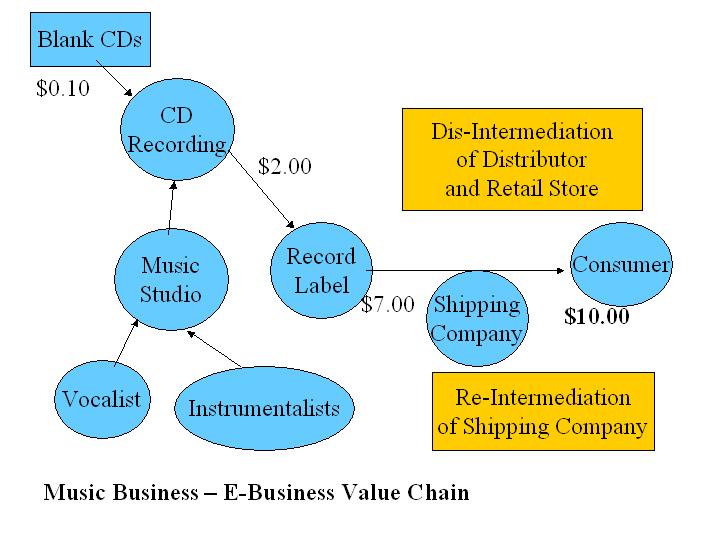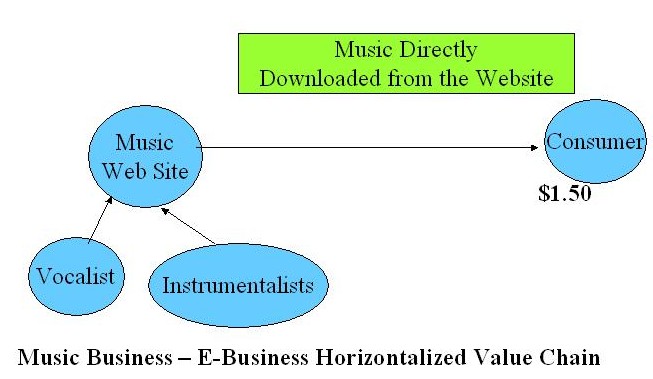E-Business
Although e-business was around for quite some time in different forms such as Electronic Data Interchange (EDI) and Electronic Funds Transfer (EFT), only after the advent of world-wide-web, E-business became as popular as it is today. Early days of e-Business were filled with over optimism. Many believed that starting an e-Business is the best way to make money. Obviously, they overlooked one key fact: a typical e-business would need a lot of planning and resources, besides the huge time commitment for day to day maintenance. As the result, in early days, many "dotcoms" could not meet their expectations and became extinct. Recently, the cost of building an e-Business has reduced significantly due to the availability of cost effective easy to use software platforms and tools.
E-Business Benefits
- Can conduct business 24/7
- Can serve customers from any where in the world
- Most of the business processes can be automated, thereby reducing the response time and improving customer relationships
- Lower costs
- Can directly sell to customers. Don't need a middle-person.
Disintermediation and Reintermediation
Below is the traditional value chain of a music business. A record label releases music CD through distributors. Distributors distribute DVD to retail stores. Retail stores sell them to customers. Say, the cost of a blank CD is around ten cents. The value increases as the product goes through the value chain. The price the customer pays at the store would be $12.99.

Next is the e-business value chain after dis-intermediation and re-intermediation. Dis-intermediation is the process of eliminating traditional middlepersons such as distributors and retail stores. The record label can now directly sell to the customer. However, due to geographical positions, a record label has to depend on a new middleperson (shipping company) to deliver the product, which is called re-intermediation. As the result, the customer can buy the product for $10.00. So, there is a cost saving.

Further optimization of value chain is possible. Artists can directly sell music to customers by uploading to a web site. Customers can directly download and play the music from that web site. The cost now reduces to: $1.50!
The process of simplifying the value chain by eliminating middle persons this way is called horizontalization.

E-Business Models
Models help us understand e-business better. The list below is by no means complete.- B-C (Business to Consumer. Most of the online retail stores fall in this category)
- B-B (Business to Business. e.g., a business buying parts from another business)
- B-G (Business to Government. e.g., a business filing sales tax to the state government)
- B-E (Business to Employee. e.g., an employee accessing payroll information online)
B-C Models
Most common B-C model is storefront model, which is followed by most of the online retailers. Customers can browse an electronic catalog and select items they like to a shopping cart. Once they decide to purchase the items in the shopping cart, they can "check out" after paying for the items in the cart. Payment can be made through credit card, debit card, check or other means. The items are then shipped to the customer's address.
Online shopping malls are very similar to the above except that there are multiple shops. A customer can shop from any of the member shops, and check out once. Shopping mall collects the payment and forward it to the member shops, after possibly deducting a fee.
You must have heard of eBayTM. eBayTM is an example for auction model. Auctions can be buyer centric or seller centric. Example for buyer centric auction is English auction, where the seller sets a reserve price, and potential buyers bid for the product or service. If the highest bid is above the reserve price, the sale is made. In reverse auction, buyer controls the process. This is very typical for government agencies. In this case, buyer says what it needs and sellers quote their prices. Lowest bid is accepted, provided seller meets the standards set by the buyer, and is ready to execute a contract. There are other types of auctions as well. For example, Vickery auction is an auction much like English auction, except that the highest bidder has to pay only the second highest price.
Portals basically provide links to other sites. They may or may not offer contents on their own, but their primary objective is to provide links to other sites. In other words, a portal can act as a single entry point to a number of sites. They are different from the shopping mall model discussed above in that, the sites can be anything -- they don't necessarily sell anything, but may just provide information. If the subject matter handled by a portal is quite narrow, e.g., a medical information or astronomy or political science, the portal is called a vertical portal or vortel. Vortel may be targeted to a specific demographic. Horizontal portals on the other hand, cater to a wide audience. Example would be a search engine like GoogleTM.
Not all businesses offer fixed prices. For some, prices are negotiable, or in some cases, as a customer you can name your price (e.g., priceline.com). If the price you are willing to pay is acceptable for the seller, the deal will take place. Different sites offer different prices, and comparison pricing models (e.g., bottomdollar.com) make it possible for customers to comparison shop and find the best deal.
Some transactions are not cash transactions. For example, you may exchange a clunker with some other make of equal value. This is one of the oldest form of commerce, called barter model, where products or services are exchanged without a cash payment.
If you are in Illinois, and order a pizza from California, it would take at least a day for the delivery. So ebusiness is not practical, in such cases, unless something is done differently. In click-and-mortar model, a customer can place the order online and then pick up from the local franchise or get it delivered.
| Model | Example |
|---|---|
| Storefront Model | New Egg |
| Shopping Mall Model | 24Hour Mall |
| Comparison Pricing Model | MySimon |
E-Business Website Setup
Most businesses don't need a website at all. For instance, if you want to sell products, you may be able to do that on Amazon market place or on ebay. If you decide to set up your own website, here are the steps:
- Get a good domain name and register that domain name. You may also want to buy a few related domain names. As prices vary, you may want to shop around. Also, watch out for hidden fees. It is also a good idea to check USPTO Trademarks website to see if someone else owns a trademark on the domain name you seek to register.
- Set up the web site. Your choices are:
- Turnkey Solutions: these are for people who don't want to do anything technical. Almost everything will be setup. All you need to do would be to add your products and prices, and customize certain other things and you are ready to roll. With this option, you may not have much less flexibility.
- Web Hosting: in this case, you don't have to buy or set up your own server, you can simply host your site with your hosting company by paying a monthly rate. Some web hosting providers also let you host your site for free, if you don't mind them showing advertisements on your site. There are two types of hosting. Shared hosting means, you share the same server with other websites. In dedicated hosting you will have a server just for your website, which of course is more expensive. If you need more than one dedicated server, many provides offer cloud solutions that help you provision additional servers as needed. Hosting providers usually give tools for web site building. Before, you decide to host with a provider, you should also find out website's uptime record to see how reliable the site is. The higher the uptime, the better it is. You don't have to buy your domain name through your hosting provider, but many hosting providers also register domain names for you.
- Host your own server: for this option, you need to buy hardware and software. You should look for an Internet Service Provider (ISP) to hook up your site to the Internet. You should develop web-pages, set up payment system, etc. If you need complete control, this is probably the best option. However, high set up/maintenance cost and technical complexity make this option undesirable for most businesses.
